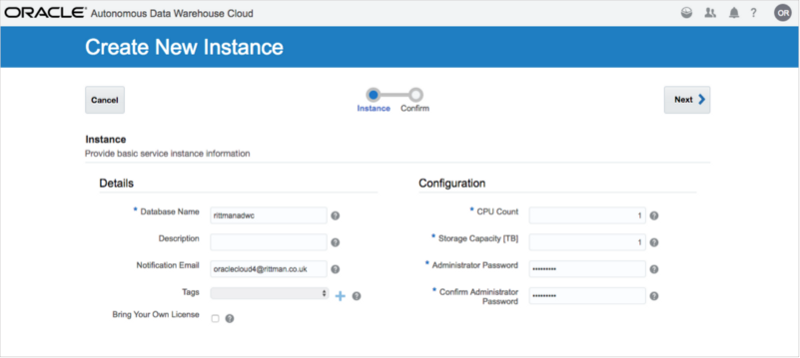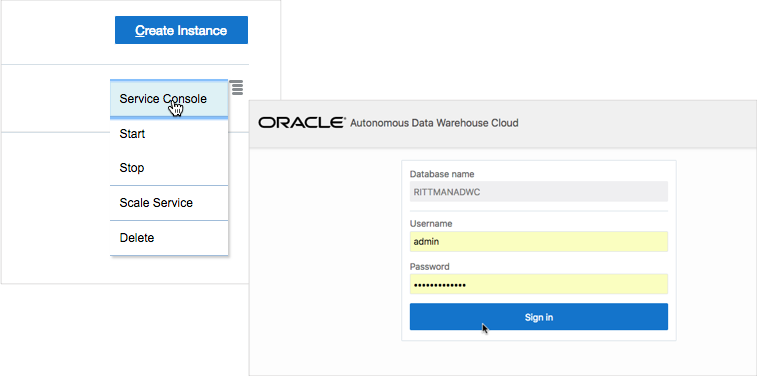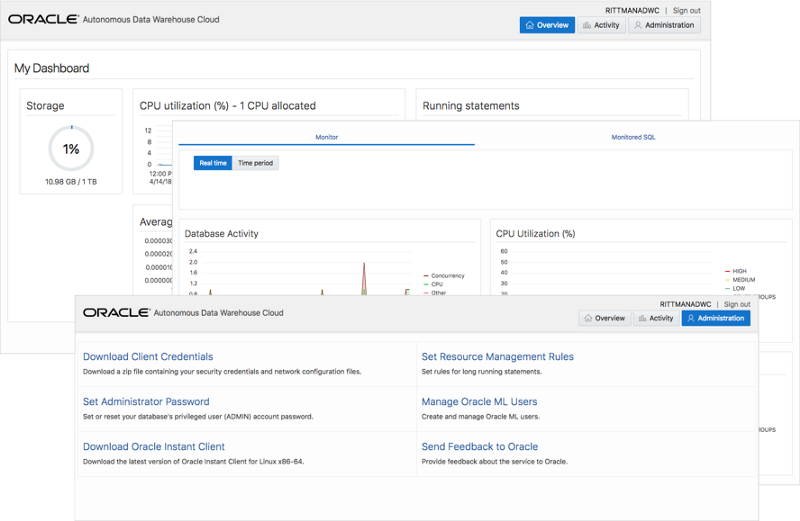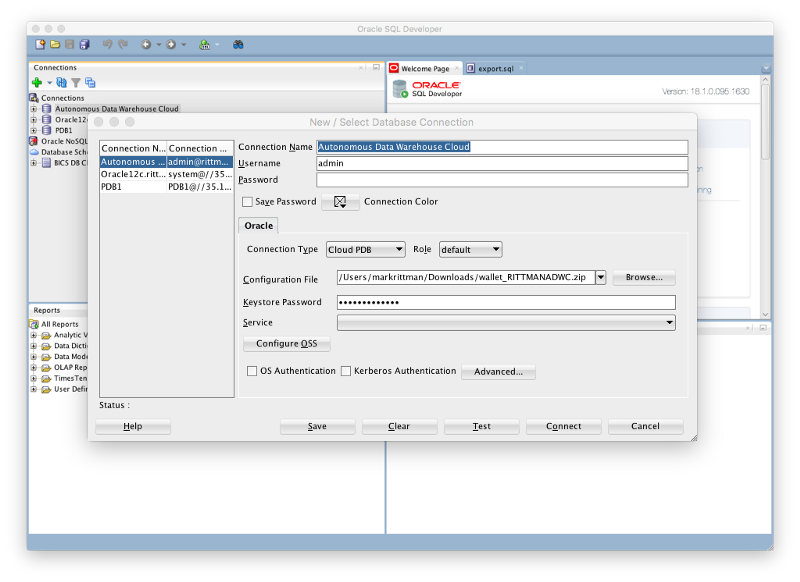First Impressions of Oracle Autonomous Data Warehouse Cloud
Regular readers of this blog will know that my day-to-day work involves ingesting, storing and then analyzing petabytes of data using Google BigQuery, one of a new generation of fully-managed, cloud-hosted data warehouse platforms-as-a-service. Services like BigQuery take care of all the database infrastructure management and capacity planning leaving you just to define tables, load data into them and then run queries using SQL or your favourite BI tool.
Oracle recently announced Oracle Autonomous Data Warehouse Cloud (ADWC) that competes in this market and given my background in Oracle technology I was interested to see how it stacked-up compared to BigQuery and similar services from the likes of Amazon AWS and Snowflake. To do this I took advantage of Oracle’s free $300 service credit offer and signed-up for an ADWC instance – note that at the time of writing the ADWC service is only available in Oracle Public Cloud’s North American datacenter region as opposed to the European ones so make sure you choose the former when creating your Oracle Cloud account.
Setting up an Oracle on-premises database was something once-upon-a-time I’d spent months and thousands on course fees studying for certifications to be able to do confidently, so it was nice to see how things had got a lot simpler with setting up an ADWC instance with the first step being to select ADWC from the Oracle Cloud Services menu, like this:

Then answer a few simple questions: the name to give the instance, number of CPUs and amount of storage to set aside initially, and the password for the administrator account.

Setup of an instance takes a few minutes, then its ready. Not bad.

The next big change you notice compared to Oracle’s customer-managed Database Cloud Service is the replacement of Enterprise Manager Database Express 12c and DBaaS Console with a single Service Console, accessed not through the usual SYS and SYSTEM superuser accounts but through a new superuser account called ADMIN, presumably adopting a naming standard more familiar to users of other SaaS and PaaS platforms.

The Service Console contains a couple of performance-tracking pages with the emphasis on read-only viewing of those stats vs. giving you controls to fine-tune database parameters or table structures, and a page where you can download a zip file containing a wallet directory with TNSNAMES.ORA and encrypted connection details to your ADWC instance.

I seem to remember at the time of Autonomous Data Warehouse Cloud’s launch that many in the Oracle community (myself included, most probably) said that all that the “autonomous” part of Autonomous Data Warehouse Cloud did was automate the Oracle Database maintenance tasks that more recent data warehousing platforms-as-a-service handled for you automatically. Another common critique at that time was that under the covers ADWC was more scripting and use of existing “advisors” than true autonomous artificial intelligence-style database management.
To be honest though, it doesn’t matter; compared to running a regular Oracle database you just fill in a short form and the platform runs without any further intervention from you, you don’t need to know how it works, job done in terms of competing with BigQuery and Redshift for ease-of-use and maintenance.
Connecting to ADWC is a bit different to regular Oracle Database connections in that it’s easier — no need to specify host, port and SID/service name — but this involves downloading a ZIP file wallet and the tool you wish to connect having support for that wallet. Oracle SQL Developer in its most recent 18c version has that support making it the obvious tool to define new users, create tables and upload data into them and then run simple SQL queries against your data.

Oracle ADWC is based on Oracle Exadata Database Server technology and supports PL/SQL, full INSERT/UPDATE/DELETE support in SQL as well as SELECT, parallel query (enabled by default) and hybrid columnar compression.
What you don’t get are indexes and materialized views as these generally aren’t considered necessary when running on Exadata hardware that’s optimized for full table scans of data arranged in compressed columnar format, and as ADWC charges per CPU per hour there’s no penalty in scanning lots of detail-level data unnecessarily as you get with BigQuery.
Also missing are features such as the Oracle OLAP Option, Oracle Spatial and Graph and Oracle Text that I’m guessing might get implemented at a later date, along with management features such as Oracle Tuning Pack that are no longer needed when the autonomous features of the platform do the database tuning for you.
Price-wise, although as I said a moment ago you do get charged by the amount of data you scan (and a bit for storage) with Google BigQuery, Oracle AWDC seems to be more expensive to run at least at the data volumes I’d be using as a developer initially evaluating the product.
If you commit to monthly charging then ADWC costs around $1200/cpu/month whereas Google charge $5/TB for queries with the first 1TB each month free plus a token amount for storage and streaming inserts, which meant my bill last month for BigQuery came to just $1.53 and my total bill for all Google Cloud Platform services including multiple hosted VMs and extensive usage of ther NLP and Geocoding APIs took the total up to just over $150. Clearly Google are aiming more at the startup market whereas Oracle are serving enterprise customers, but don’t make the assumption that just because AWDC is elastic it’s also super-cheap for hobbyist use, long-term.
So now its a case of loading some sample data into ADWC using SQL Developer and then running a couple of test queries to see it working in action with my data.

Tomorrow, I’ll show how Looker be connected using the newly announced support it has for Oracle ADWC and later on in the week do the same for Oracle Analytics Cloud and DV Desktop.
